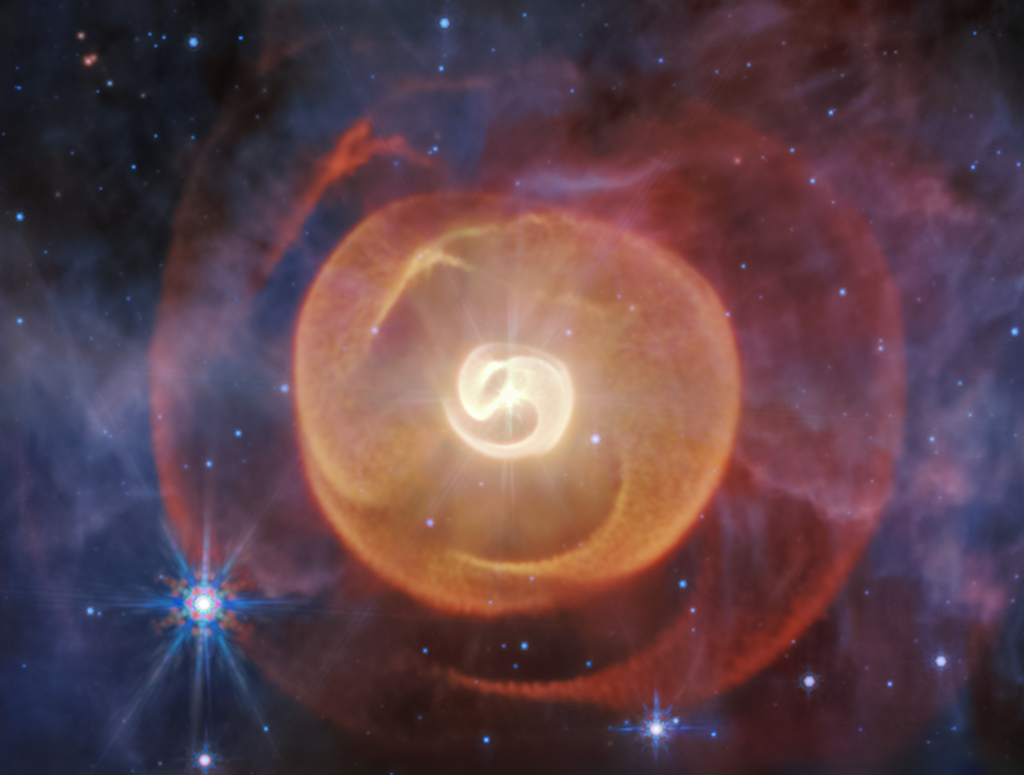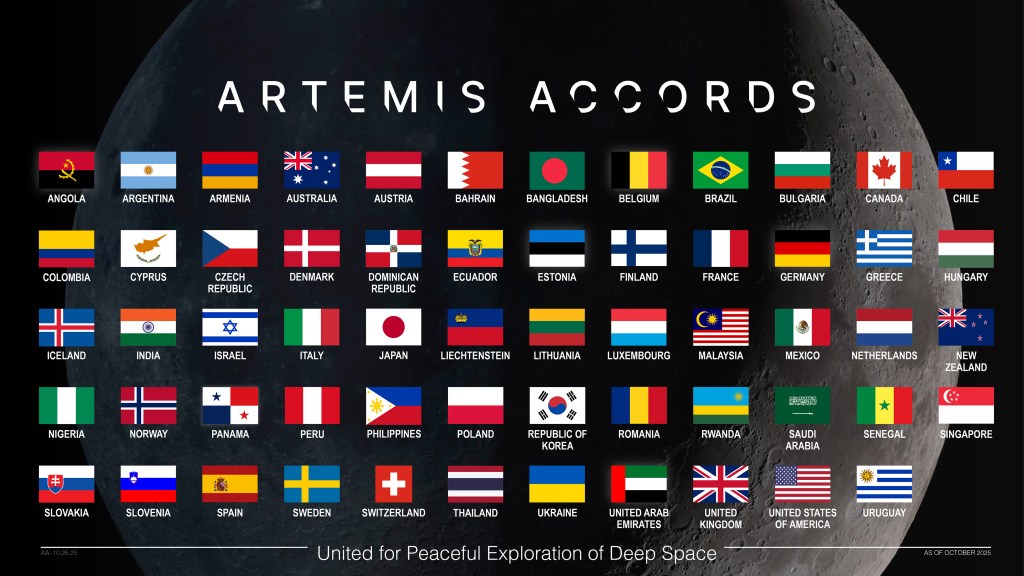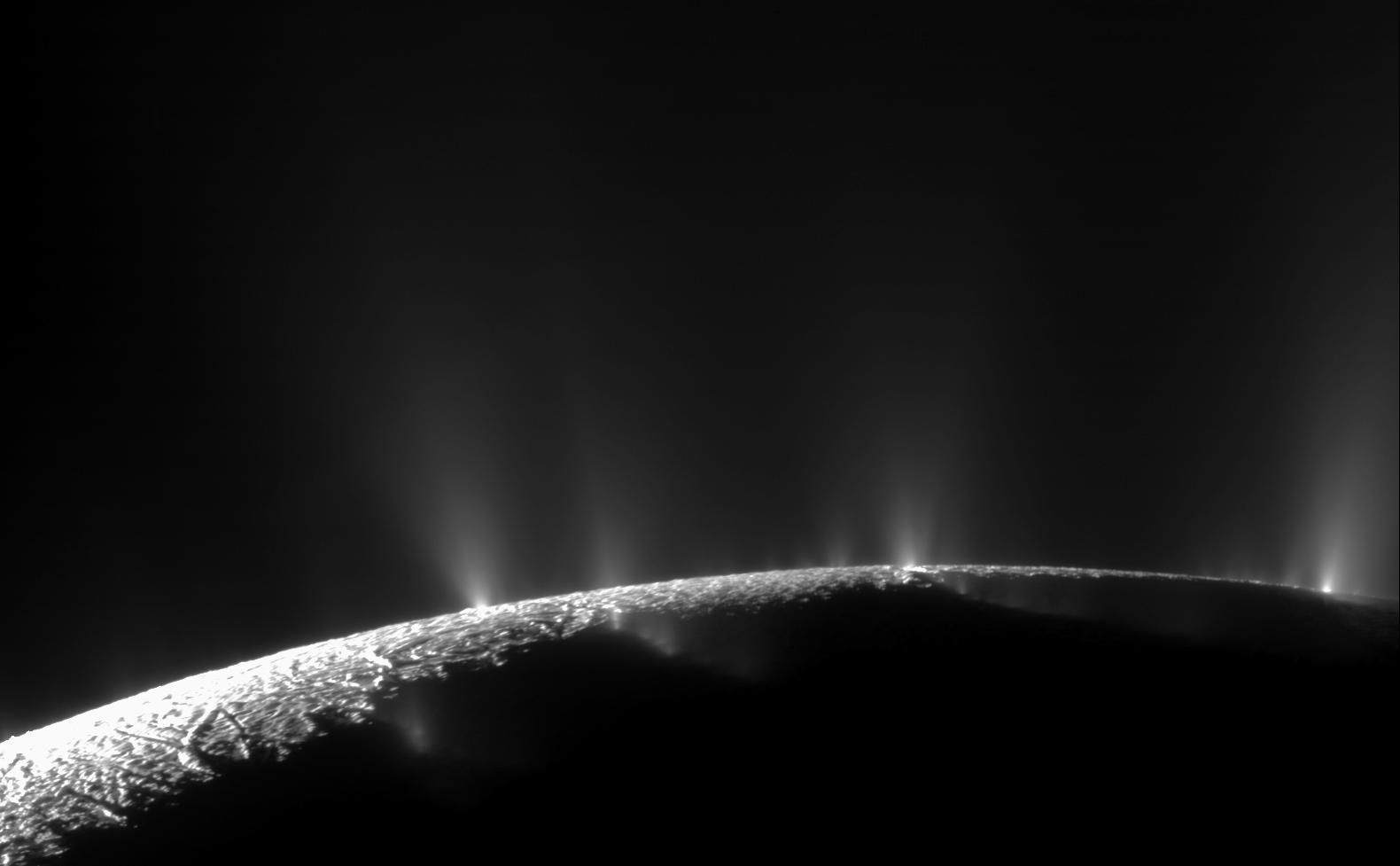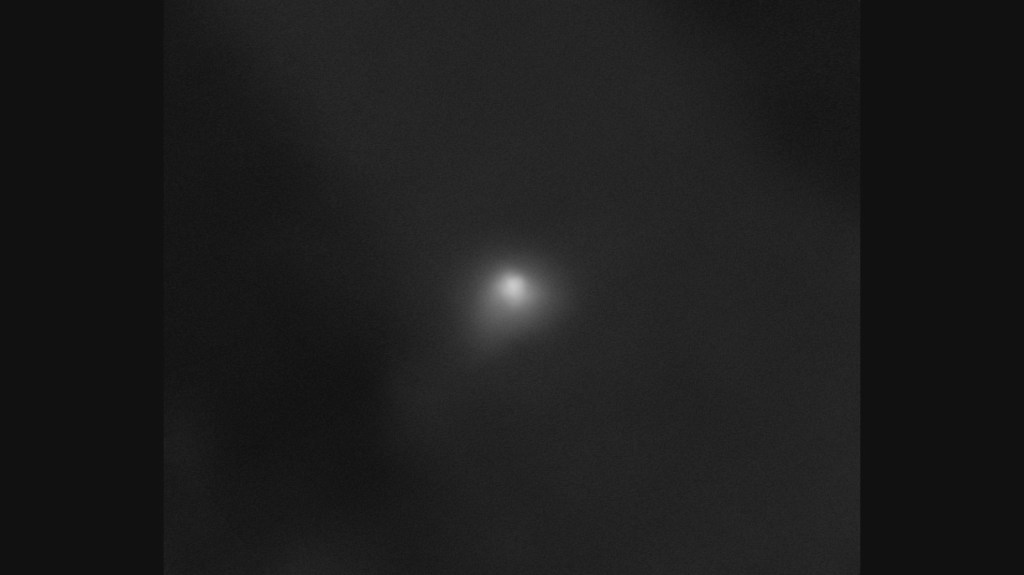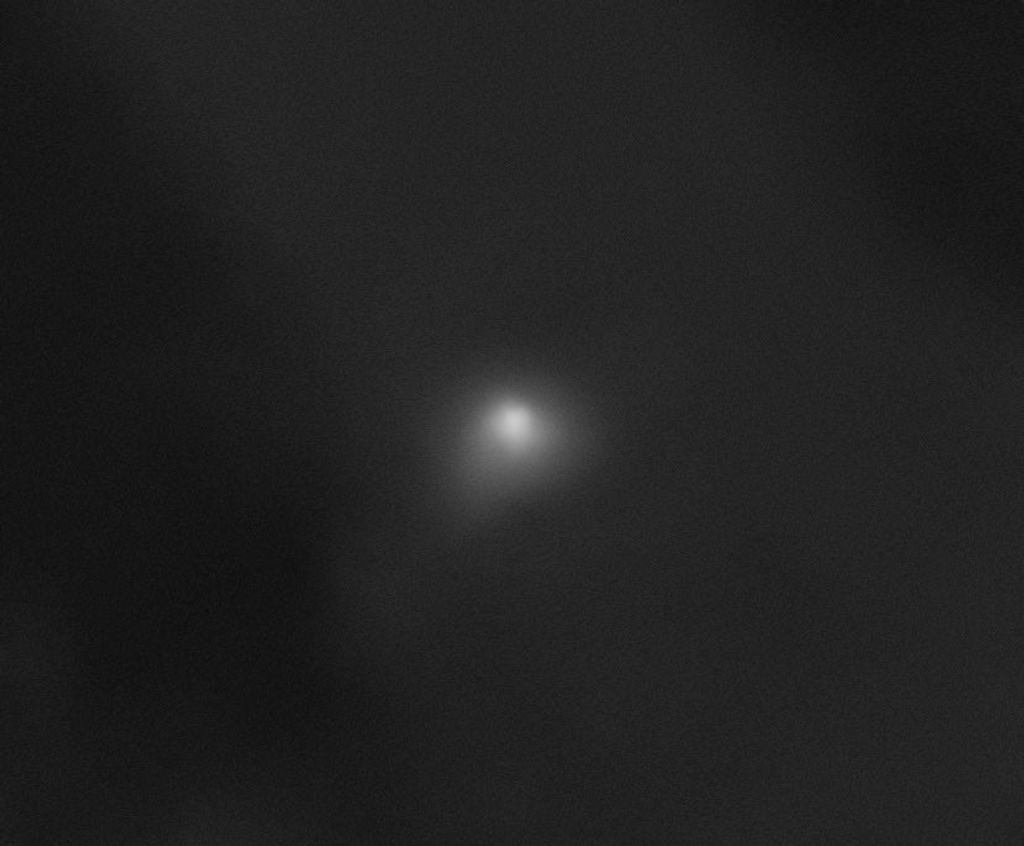1 min read
Terzan 12 Context Image

This composite image shows the location of the globular star cluster Terzan 12 as seen by the Hubble Space Telescope.
[Top Frame]—A view of a section of our Milky Way in the direction of the constellation Sagittarius. Dense clouds of dust are etched across a whitish background of stars. The object at upper right is the Rho Ophiuchi cloud complex.
[Bottom-left Frame]—Photo of a small portion of the Milky Way which is only one-degree across — twice the angular diameter of the full Moon. The globular cluster is in the middle of the box at image center.
[Bottom-right Frame]—A Hubble Space Telescope image of the dense globular star cluster Terzan 12. Intervening dust scatters starlight to create multiple reddish hues. The brightest red stars in the photo are bloated, aging giants, many times larger than our Sun. They lie between Earth and the cluster. Only a few may actually be members of the cluster. The very brightest hot, blue stars are also along the line of sight and not inside the cluster, which only contains aging stars. The cluster is about 15,000 light-years from Earth.
About the Object
- R.A. PositionR.A. PositionRight ascension – analogous to longitude – is one component of an object's position.18:12:15.80
- Dec. PositionDec. PositionDeclination – analogous to latitude – is one component of an object's position.-22:44:31.00
- ConstellationConstellationOne of 88 recognized regions of the celestial sphere in which the object appears.Sagittarius
- DistanceDistanceThe physical distance from Earth to the astronomical object. Distances within our solar system are usually measured in Astronomical Units (AU). Distances between stars are usually measured in light-years. Interstellar distances can also be measured in parsecs.15,000 light-years
- Object NameObject NameA name or catalog number that astronomers use to identify an astronomical object.Terzan 12
- Object DescriptionObject DescriptionThe type of astronomical object.Globular cluster
- Release DateSeptember 7, 2023
- Science ReleaseHubble Sees a Glittering Globular Cluster Embedded Inside Our Milky Way
- CreditNASA, ESA, DSS, ESA/Hubble, Stéphane Guisard (ESO), Roger Cohen (Rutgers University), Joseph DePasquale (STScI)
Related Images & Videos

Terzan 12 Compass Image
This is Hubble Space Telescope's colorful view of globular star cluster Terzan 12. It is a compact beehive-like structure of hundreds of thousands of stars crowded together. Because of scattering by interstellar dust, the stars on the left side of the image appear redder. The...
Share
Details
Claire Andreoli
NASA’s Goddard Space Flight Center
Greenbelt, Maryland
claire.andreoli@nasa.gov

